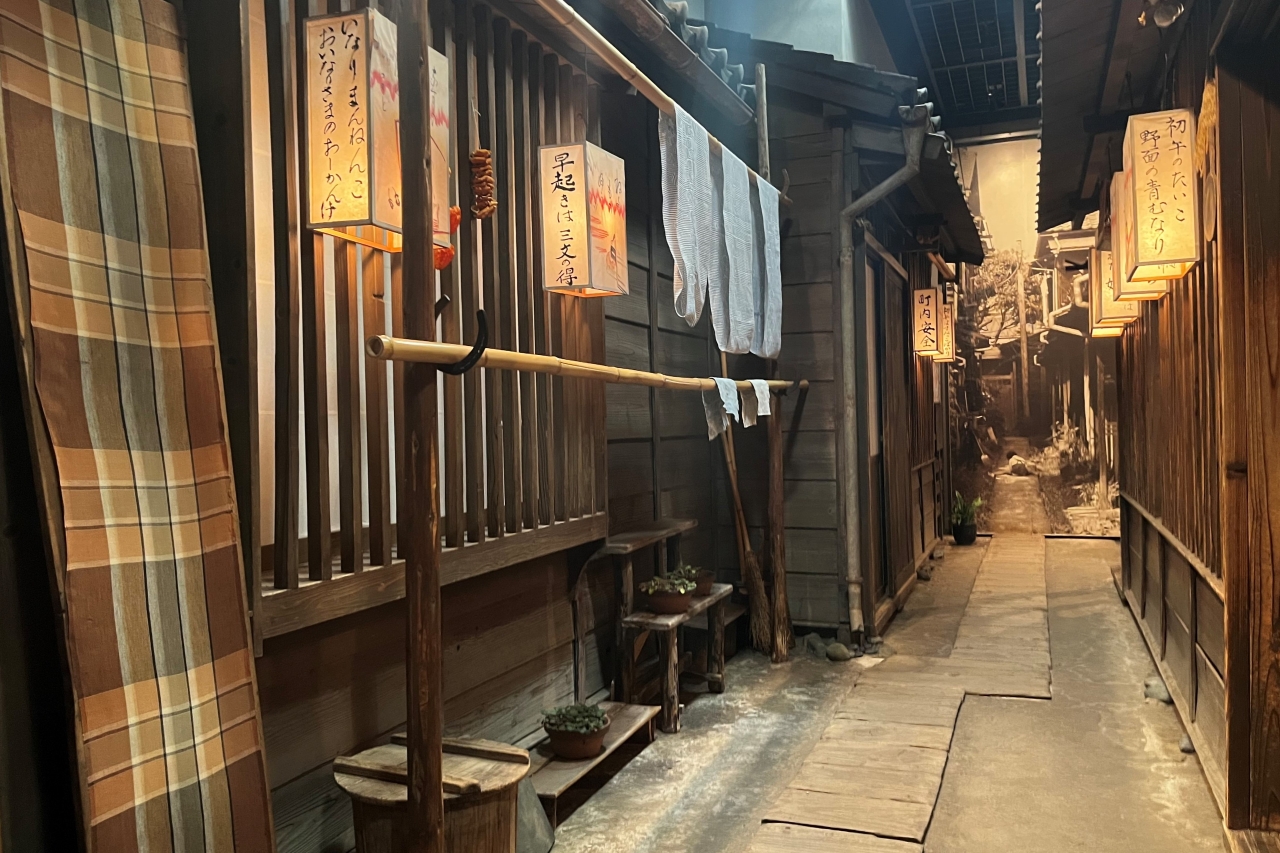Shitamachi Customs Museum
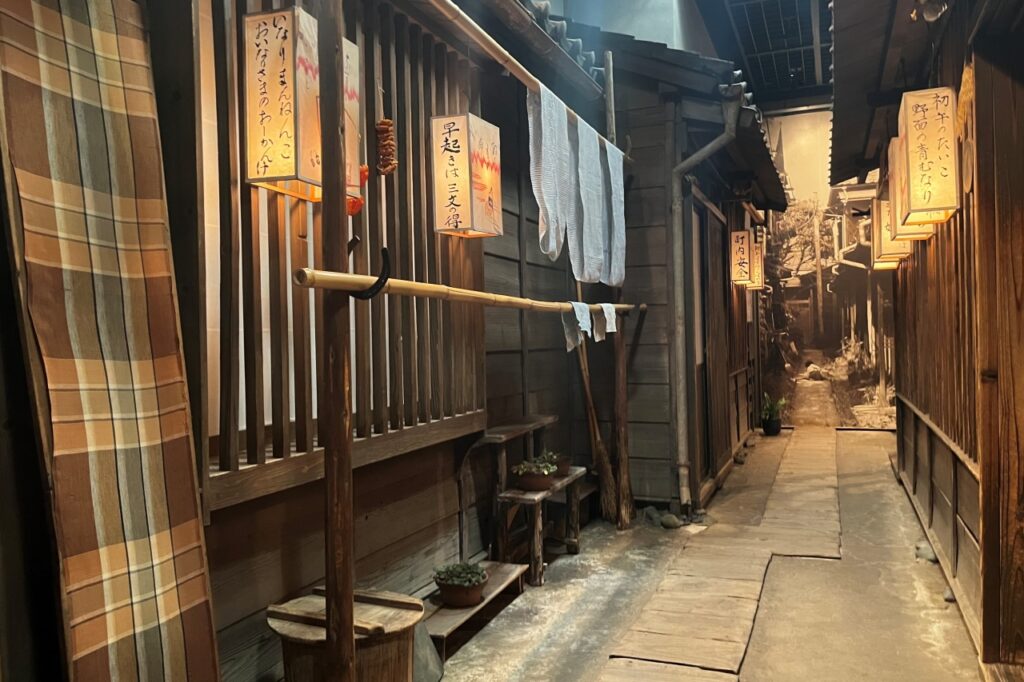
The Shitamachi Museum of Taito Ward stands on the banks of Shinobazu Pond in Ueno, Tokyo.
Since its opening in 1980 to convey the good old downtown Tokyo culture to future generations, the museum has entertained many visitors, but from April 1st, 2023, the facility will undergo a large-scale renovation. Did you know that the museum will be closed until the end of 2024 (date undecided) due to construction work ?
After the renovation, some of the current exhibits will no longer be visible, so I feel hopeful and sad at the same time.
Therefore, this time, I interviewed the inside of the museum to introduce the appearance of the Shitamachi Museum, which has been loved for about 42 years.
The final special exhibition, “Children of the Meiji, Taisho, and Showa eras -The world of children in the downtown area spelled out with materials-” is also mentioned in the latter half of the article, so be sure to visit during the remaining one month of business. please give me.
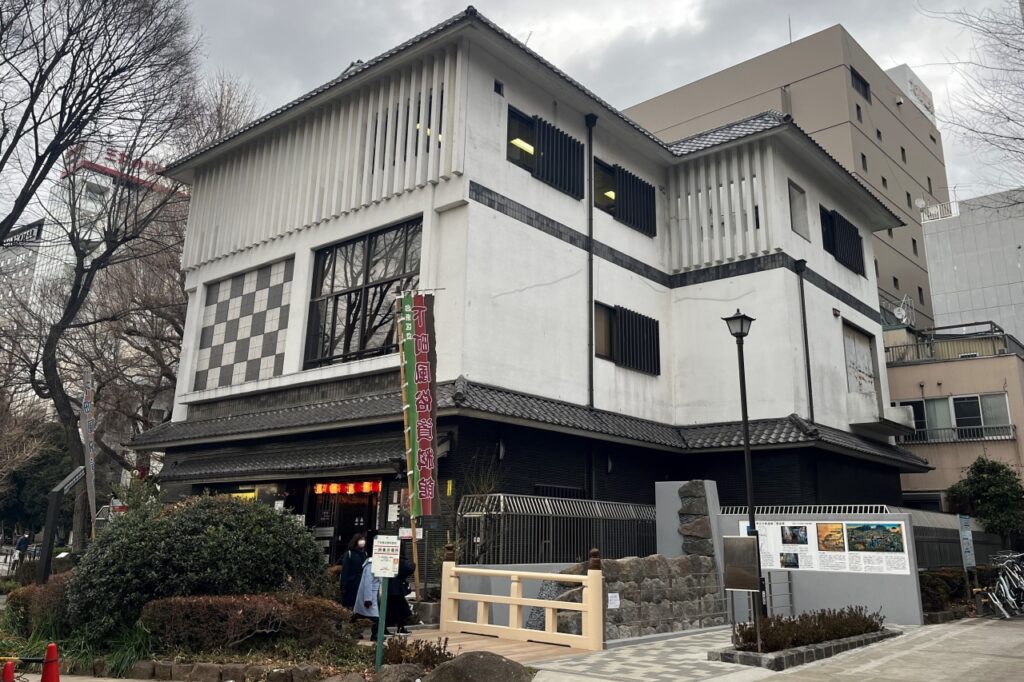
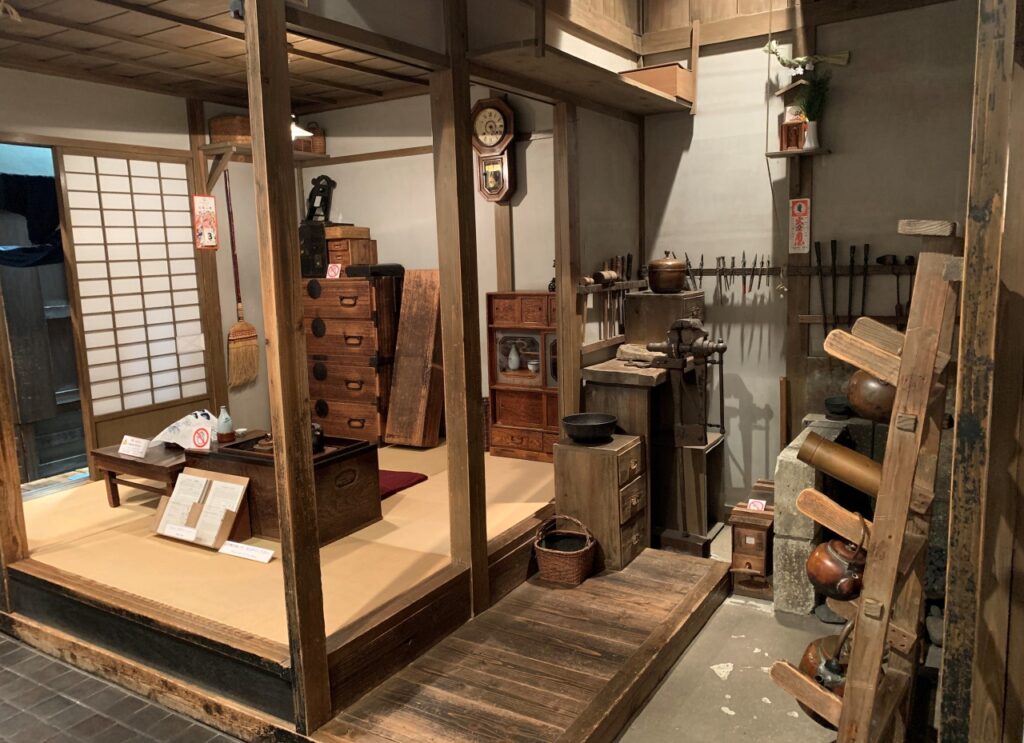
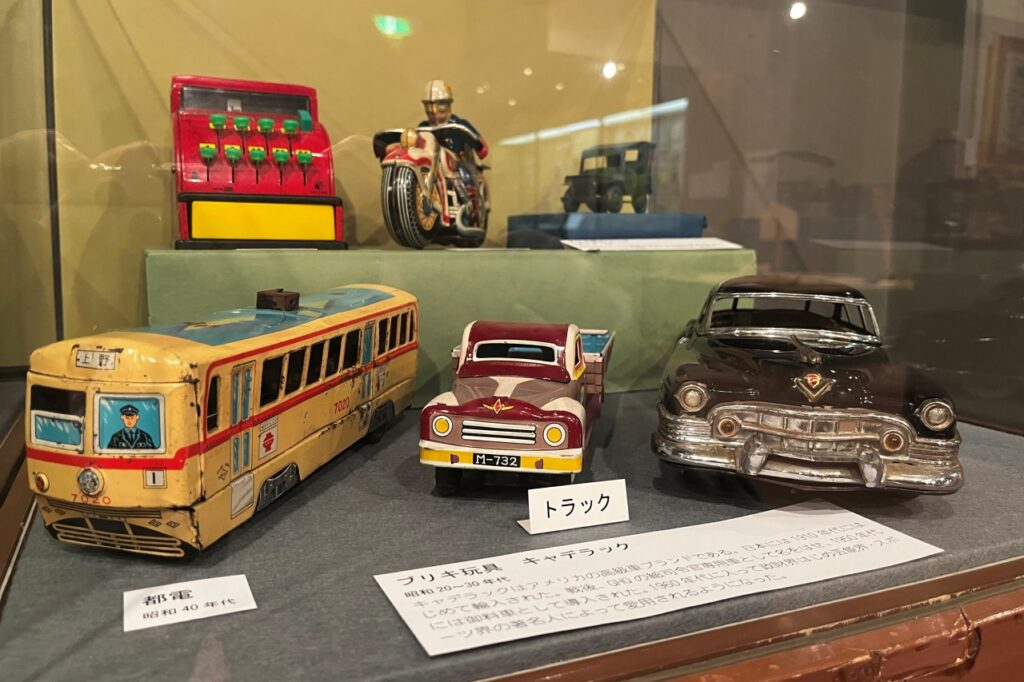
Shitamachi Museum of Customs Born from the Voices of Residents
It was destroyed by fire during the Great Kanto Earthquake in 1923 (1923) and World War II in 1945 (Showa 20), and was redeveloped in 1964 (Showa 39) to host the Tokyo Olympics. The streets and culture of the good old downtown area disappeared rapidly, and the lives of the common people changed completely.
Around the 40th year of the Showa era (1965), people who loved shitamachi culture began to voice their concerns about this situation, and the idea of establishing a museum to pass on the memories of shitamachi to the next generation was born. And on October 1, 1980, the Shitamachi Museum was finally opened.
In the exhibition room on the 1st floor, merchant houses, tenement houses, wells, etc. are reproduced in almost life-size as a downtown scenery of the Taisho era before the Great Kanto Earthquake (about 100 years ago) . In the exhibition room on the 2nd floor, we introduce materials and toys related to the history of the downtown area centering on Taito Ward.
The charm of the exhibition is that it is an experience-based content, where you can not only appreciate it, but also go up to the actual recreated tatami room and touch the exhibits (*). According to Mr. Honda, a researcher at the museum , this so-called hands-on exhibition method is now being used in various museums, but the Shitamachi Museum is actually the pioneer.
(*Due to the corona crisis, contact with the exhibits is prohibited, with the exception of some)
Since the museum was opened in response to a request from the private sector, it can be said that many of the items in its collection are donated items collected from inside and outside Taito Ward . You can enjoy a more realistic downtown atmosphere with furniture and daily necessities that are actually in your home.
It has been visited by more than 3 million people so far, and recently it has become a popular spot among young people seeking a retro atmosphere and foreigners visiting for sightseeing.
Travel back in time to the Taisho era 100 years ago

The first thing that catches your eye on the first floor is the bright red hexagonal automatic telephone (later renamed public telephone) box .
In 1900, Japan’s first automatic telephone appeared at Ueno Station and Shimbashi Station in Tokyo. At the museum, a restored box-type automatic telephone that was used from 1910 is on display.
The bright red color of the automatic telephone booth must have looked beautiful in the downtown area.

The phone body inside was actually used. The handset is split, not a dial type, but a type that first calls the operator and connects to the other party’s phone.
Nowadays, we rarely see push-button public phones, let alone dial-type ones, but I felt a sense of history because they were antiques from even before that. The position of the mouthpiece is very low, and it seems to be difficult for tall people to bend down to speak. It is an exhibition that makes you imagine what the average height of Japanese people was at that time.

This is a reproduction of the setting of a large merchant house facing the main street, the storefront of a Hanao (*) manufacturing wholesaler . You can see traditional merchant house architecture such as “dashigeta-zukuri” and “agedo” that have been handed down since the Edo period.
(*According to the notation of the exhibition commentary at the Shitamachi Museum, it is a flower thong instead of a thong.)

In the back of the workshop, colorful thongs hang down. At that time, people usually thought of footwear as clogs and zori, and thongs were a necessity in daily life. According to the season and kimono, they enjoyed changing the fashion by changing the materials, shapes and patterns that were in fashion at that time.
In terms of rare exhibits, there is a “Yojingo” hanging above the workshop. It’s like a present-day emergency bag.
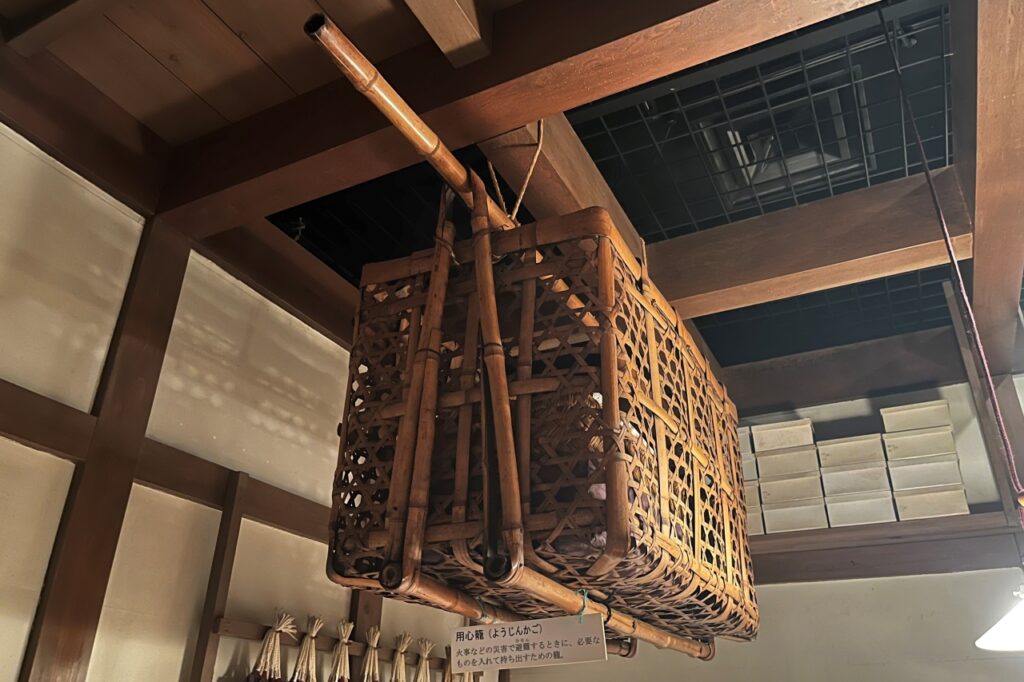
“In the old Edo area, there were many floods, so in order to avoid getting wet, we set up a basket and threw all the important things in it. (Mr. Honda)
Explanation sheets are distributed for all of the exhibits, but there are probably many items that are unfamiliar to those of us who live in the present age, such as caution baskets. First of all, it might be interesting to go around the museum while guessing, “What will that tool be used for?”
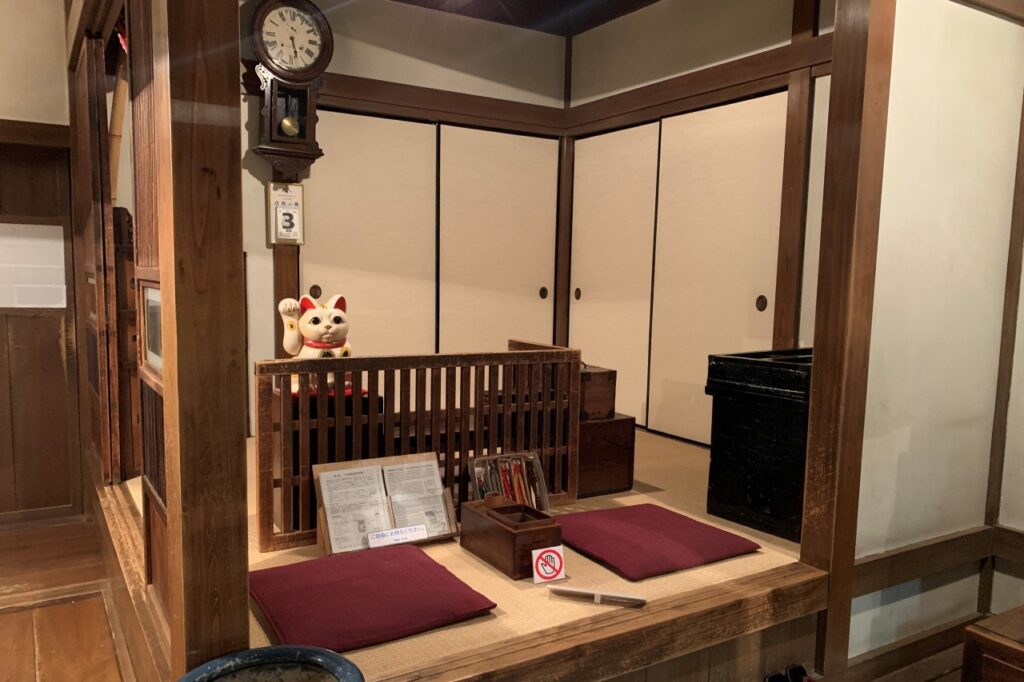
This is a counter and business negotiation space. It is said that merchants always had a register (a place for writing accounts and paying bills), and only selected people such as the owner and the clerk were allowed to enter through the lattice of the register as a barrier. . Of course, you can freely enter the reproduction exhibition. There were abacuses, “money boxes,” which were safes at the time, and “mark boxes,” which were used to store personal seals.
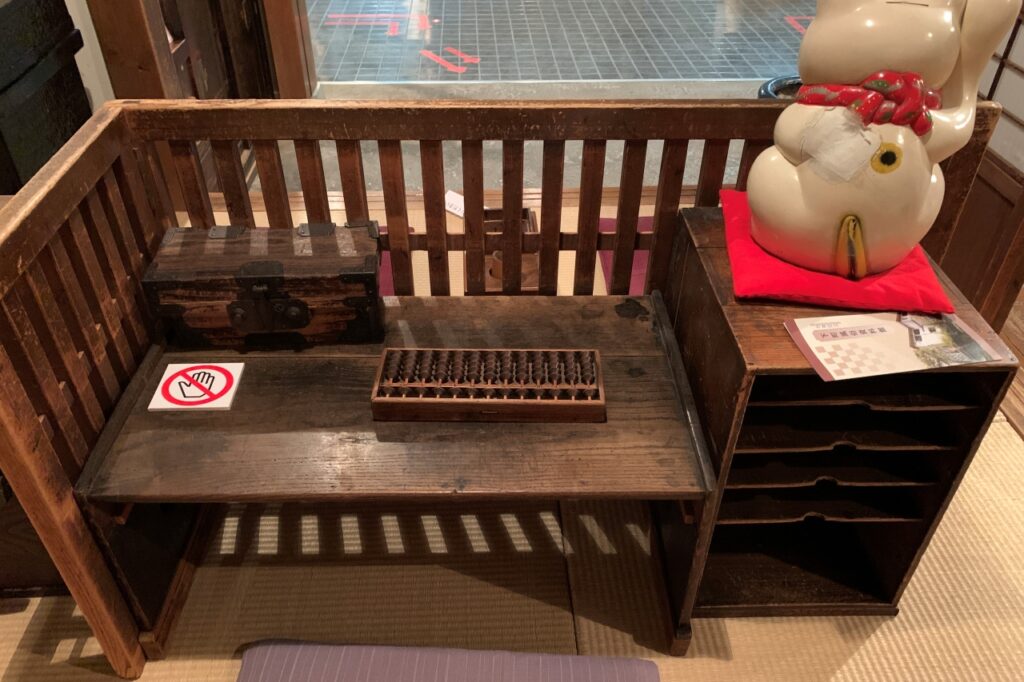
“Regarding these reenactment exhibitions, there are documents that tell us that when the museum opened, the director and staff of the time stayed overnight to see what kind of things would be useful and where they would be useful, and then decide on the layout based on actual experience. is right-handed (back then, it was normal for left-handed people to be corrected), so there is a lot of attention to detail, such as arranging things so that you can grab things with your right hand.” (Mr. Honda)
Mr. Honda’s story tells us that the role of the museum was to convey the real life of the time, rather than the presentation of the exhibits.
In front of the merchant house, there are also rickshaws , which were invented in Asakusa and were a representative means of transportation before the spread of automobiles, and hakoguruma, which were indispensable for the delivery business, and are lively. It created a downtown atmosphere.

Living in a tenement house that nurtures the warmth of downtown hospitality
Across from the merchant’s house, there is a re-creation of tenement houses, which are familiar from period dramas, surrounded by narrow alleys.
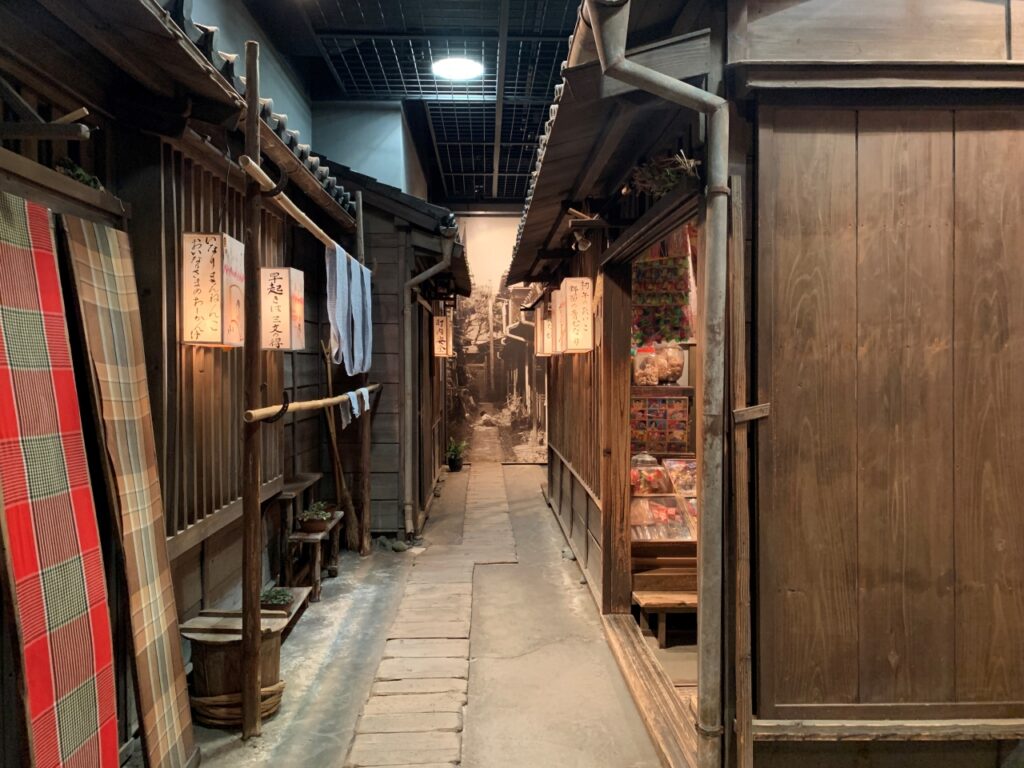
The time of the interview was “Hatsuuma” (the first day of the horse in February). The Hatsuuma festival is held every year at Inari shrines across Japan to pray for a bountiful harvest. Since there is also a small Inari shrine in the same building, the tenement house was decorated with Jiguchi lanterns, which had been hung in the city during the Hatsuuma festival since the Edo period.

Jiguchi is a play on puns based on proverbs and sayings that were popular in the Edo period. Jiguchi lanterns were created by attaching caricatures to Jiguchi lanterns, and they entertained the people who gathered for the Hatsuuma festival.
In this way, the museum welcomes visitors with delicate productions that match the changing seasons, such as New Year decorations and Tanabata decorations. Decorations are also fun on special occasions, and can be a means of carrying gen and offering prayers to the gods and buddhas. It’s a smart device that allows you to experience the spirituality of the people of the time and the scenery of the four seasons in the downtown area.
By the way, before it was forbidden to touch the exhibits due to the corona disaster, it seems that they secretly prepared small things that only people who noticed, such as changing clothes in the drawer, could enjoy.
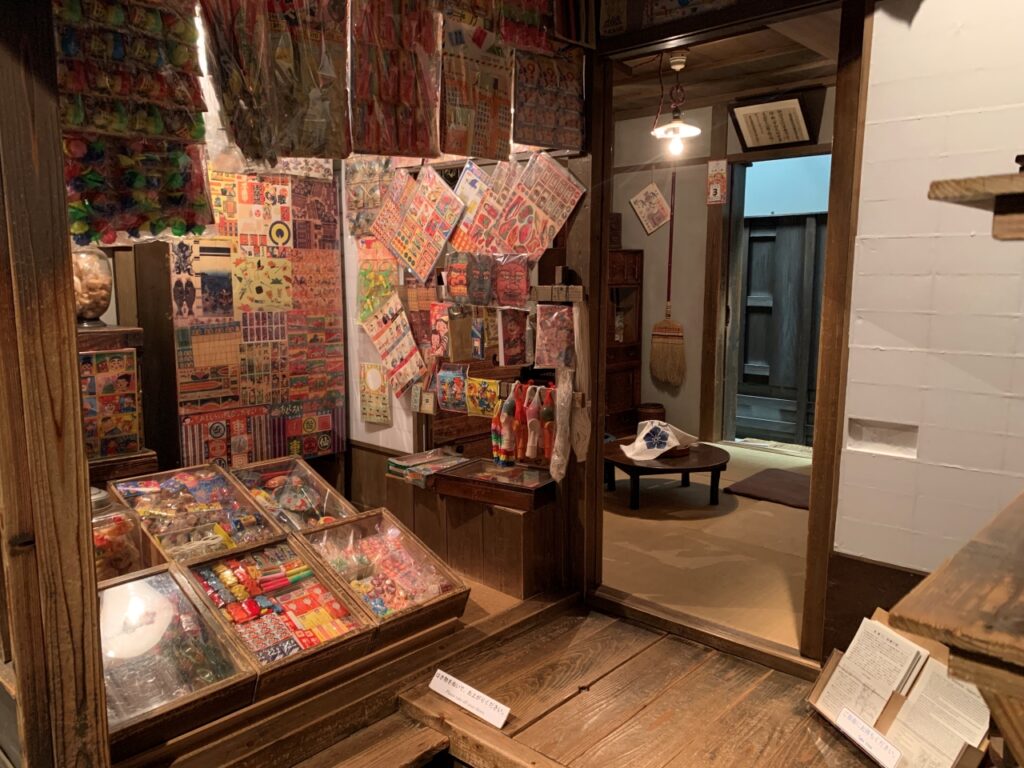
In the one-storied nagaya, which was common before the Great Kanto Earthquake, a candy store and a dokoya are reproduced.
Dagashi shops, which also sold toys such as spinning tops and marbles, were social gathering places for children. The kitchen and tatami room are also built in the setting that it is open in a part of the residence.

Regarding the infrastructure of the downtown area at that time, although electricity was available, electrical appliances were not widespread, and water and gas were not common. Such a situation is also transmitted from the fact that there was a water bottle in the kitchen to store water drawn from the well shared by the residents.
A wooden sink can be seen under the water jar, and a workshop like this where you build a sink near the floor and squat down to cook is called a “sit nagashi.” I was surprised to learn that this was also common in the Taisho era before the earthquake. This arrangement is unthinkable now.
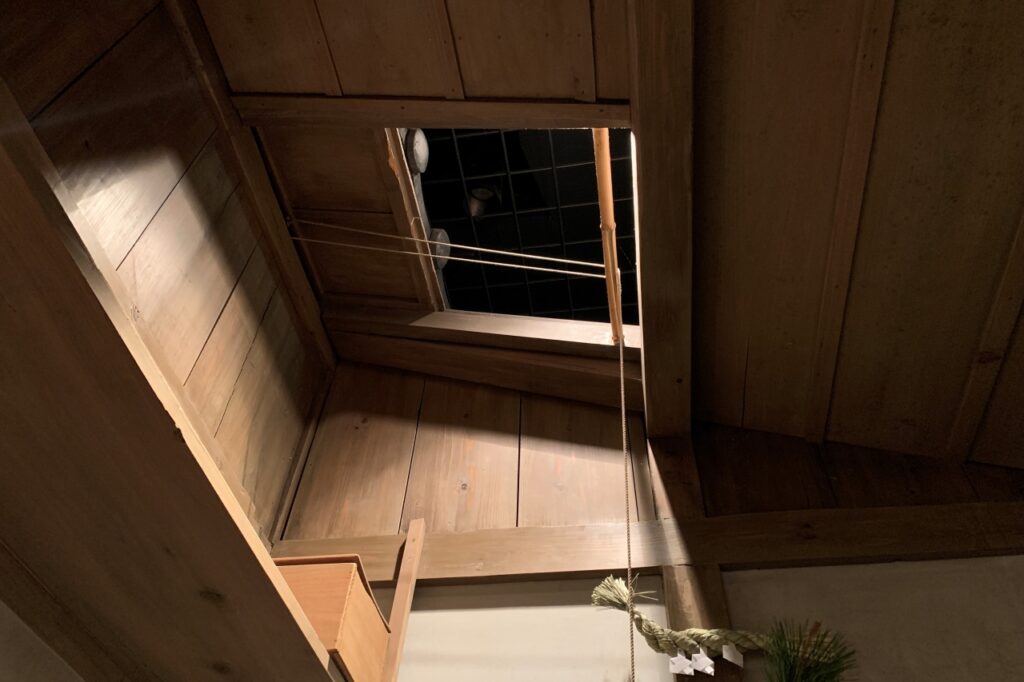
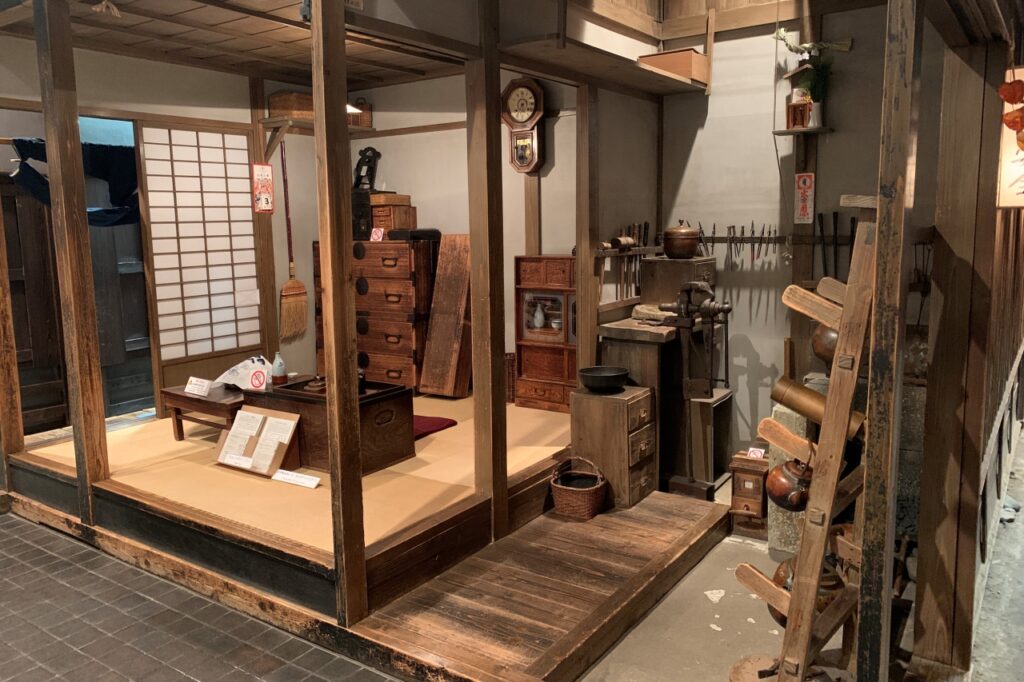
Dotsuboya is a shop that makes and repairs copper products such as pots and kettles, as well as kettles. Various craftsmen lived in the downtown area, but the craftsmen of Doutsuboya were indispensable to people’s lives in an era when people used things carefully while repairing them.
On the wall of the workshop, a kind of Shinto altar, called “Kojindana”, which enshrines the god of fire, is made.
“Dotsuboya is a profession that uses fire, but at that time it was not possible to call a fire engine with a single phone call, so I think the fear of fire was much stronger than it is now. I would like to convey that it was an era when there were a great many people who were deeply religious.” (Mr. Honda)
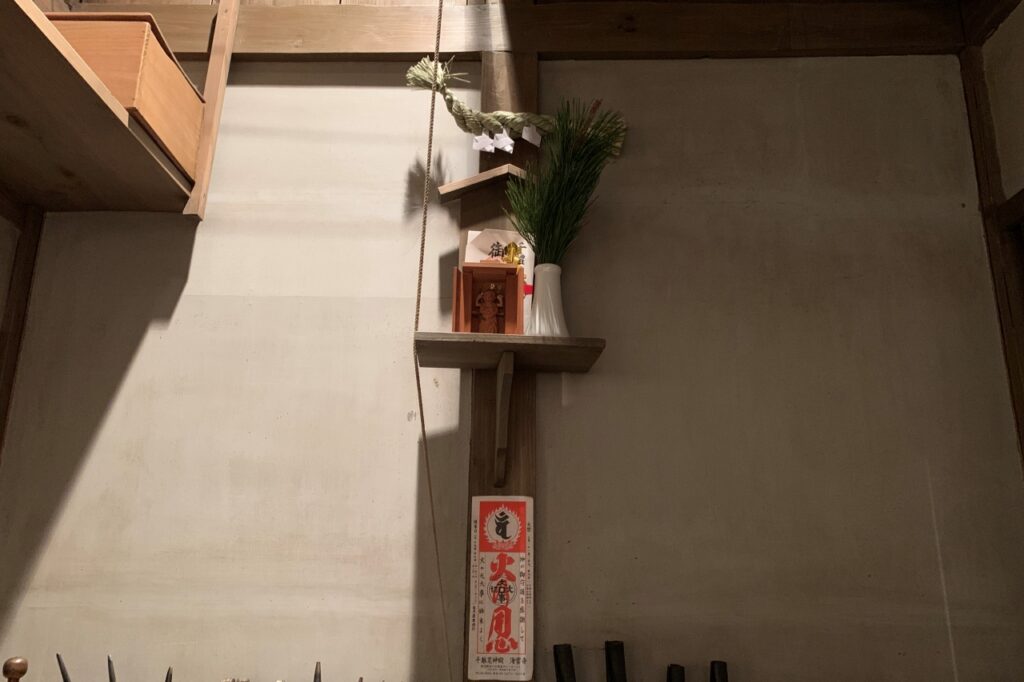
Looking back, I found a Shinto altar at the candy shop I mentioned earlier. It is said that in the past, every household and every merchant house had a Shinto altar, so prayers to the gods and buddhas must have been an essential part of daily life.
The Inari shrine built in the back of the row house is also an exhibit that shows the depth of devotion.
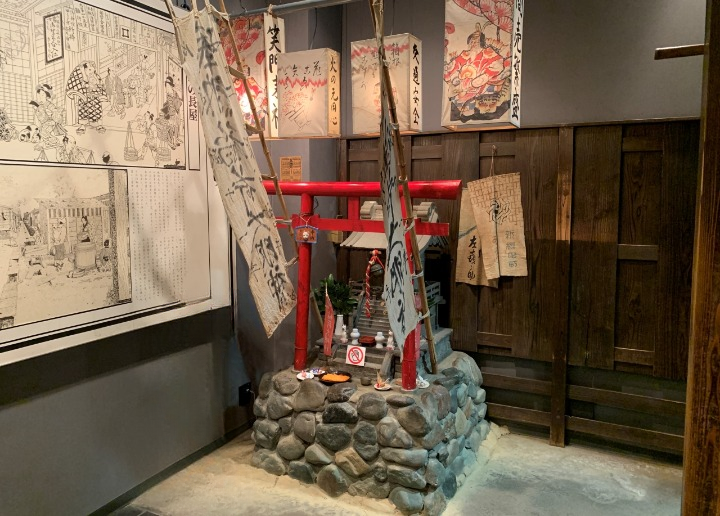
Inari was enshrined as a guardian deity of land and mansions in the Edo period, and it is said that it was always built in each tenement house. As a result, many Inari shrines still exist today in the downtown area.
A house separated by a single thin wall. For those of us who live in modern times, a tenement house is a living space in which the concept of privacy is incomparably weaker than condominiums and apartments. Residents will inevitably become friendly with each other, and I think it was more necessary than ever to be considerate of not causing trouble to others.
The kindness of the people in downtown may have been formed from such a lifestyle.

The merchant house and row house in the exhibition room on the first floor were built when the museum opened in 1980, so they are over 40 years old. The floors and pillars, which must have been brand new when the museum first opened, had been damaged by people coming in and out almost every day for many years.
Everyone’s longing? You can also take a commemorative photo while sitting on the watch stand of the sento.
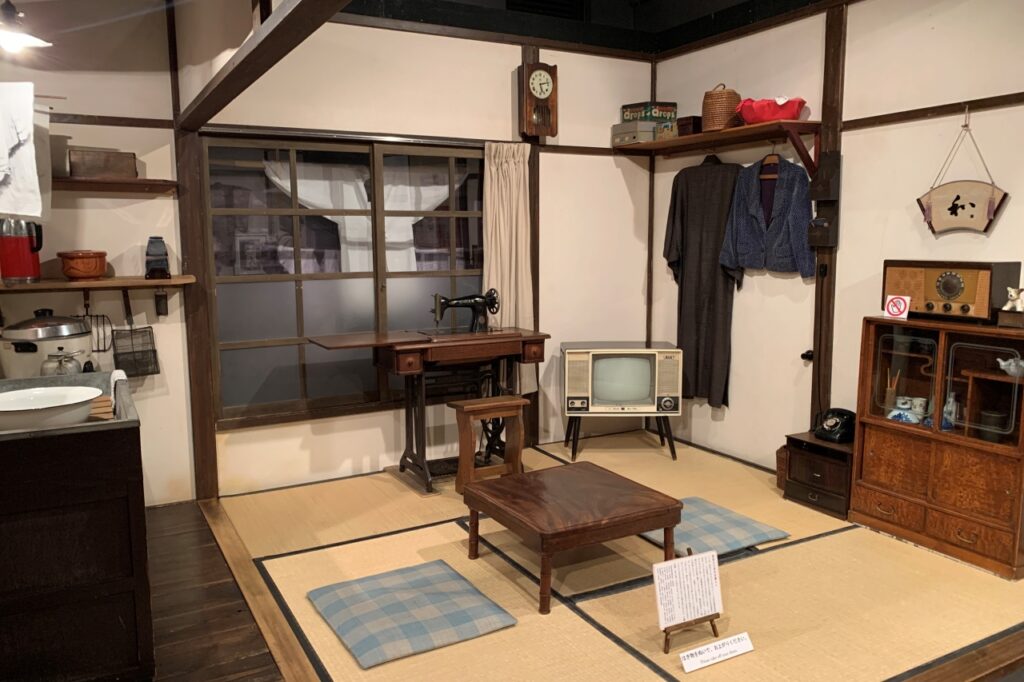
On the second floor, as a permanent exhibition, people’s lives in the 1950s are reproduced. The kitchen and living room of a downtown apartment. Starting with Toshiba’s black-and-white TV that uses vacuum tubes, and Japan’s first automatic electric rice cooker, there are a number of high-end home appliances of the time, so you might imagine a wealthy home.
Furnishings such as chabudai and chests of drawers, which must have been passed down from before the war, coexist with the latest home appliances. One can imagine the humble desire to keep using things that can be used for a long time, as well as the desire for convenience and comfort. . This kind of lifestyle gradually disappeared after the 1960s, and we entered an era of mass consumption. Behind the nostalgia, you can also understand the sense of crisis of those who thought about preserving the downtown culture, which was the impetus for the establishment of the museum.

Next to it, the watch stand that was actually used at the public bath “Kingyoyu”, which operated in Taito Ward from 1950 (1950) to 1986 (1986), was placed almost exactly as it was. . It is said to be the museum’s most popular photo spot because it is the museum’s largest donation and you can actually sit on it.
“Especially, men from the Taisho to Showa generations may have longed for it since long ago, and they seemed to really enjoy the bandai experience, and they really wanted to sit down. Many of them don’t seem to know what a bandai is, but when they see the exhibition, they say, ‘This is what a bandai is like’ and ‘I like it’. I see it… It seems that the exhibition, not just this bandai, is a catalyst for conversation among visitors.” (Mr. Honda)
It is not a commentary, not a curator, but an ordinary person explains the exhibits smoothly. One of the charms of the museum is that you can meet such scenes.
Special exhibition “Meiji, Taisho, Showa Children” is being held (until March 31, 2023)

In the exhibition room on the 2nd floor, in addition to the reproduced exhibition of the Showa apartment and the watch stand of the public bath, we usually display items related to the downtown area centered on Taito Ward and materials related to annual events. However, on this day , the last special exhibition before the renewal, “Children of the Meiji, Taisho, and Showa eras -The world of children in the downtown area spelled out with materials-” was being held. (Viewing fee is included in admission fee)
This exhibition focuses on the daily lives of children living in the downtown area from the Meiji to Showa eras, and introduces the games and rituals that children went through during the process of growing up, mainly from the materials held by the museum. what to do.
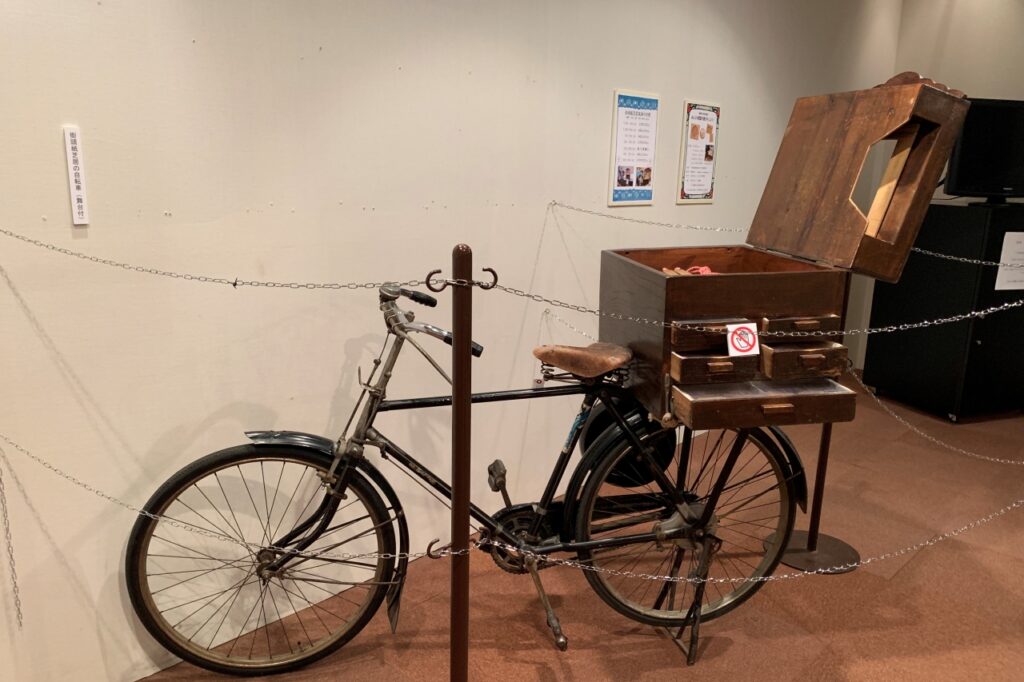
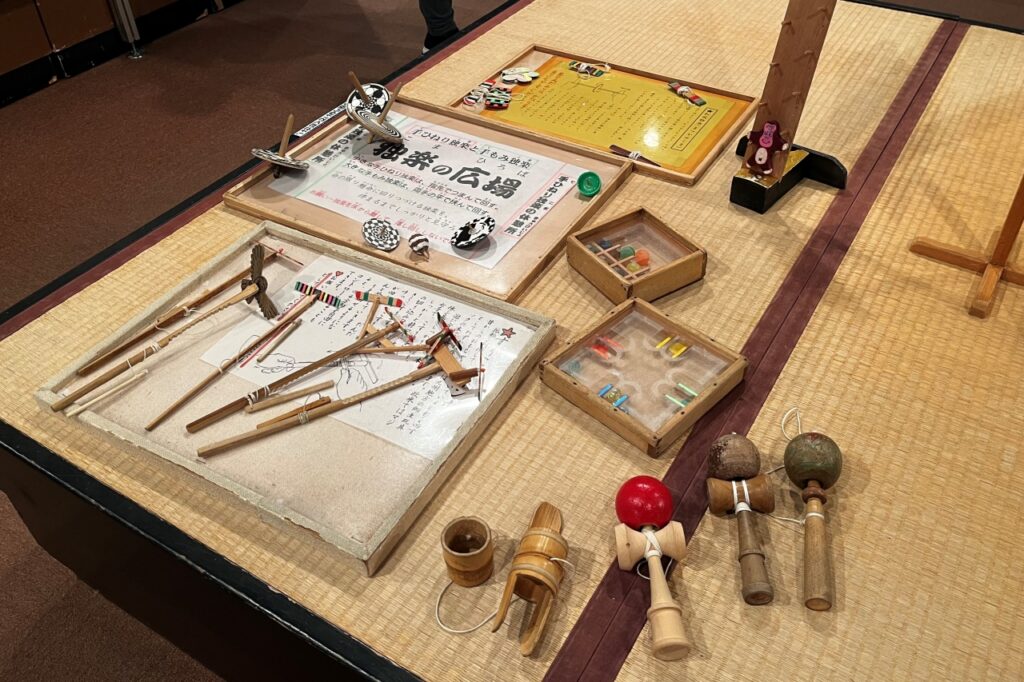
In particular, the materials related to children’s games are very rich, and the exhibits were roughly divided into “outdoor games” such as beigoma and menko, and “home games” such as marbles and pretend play.
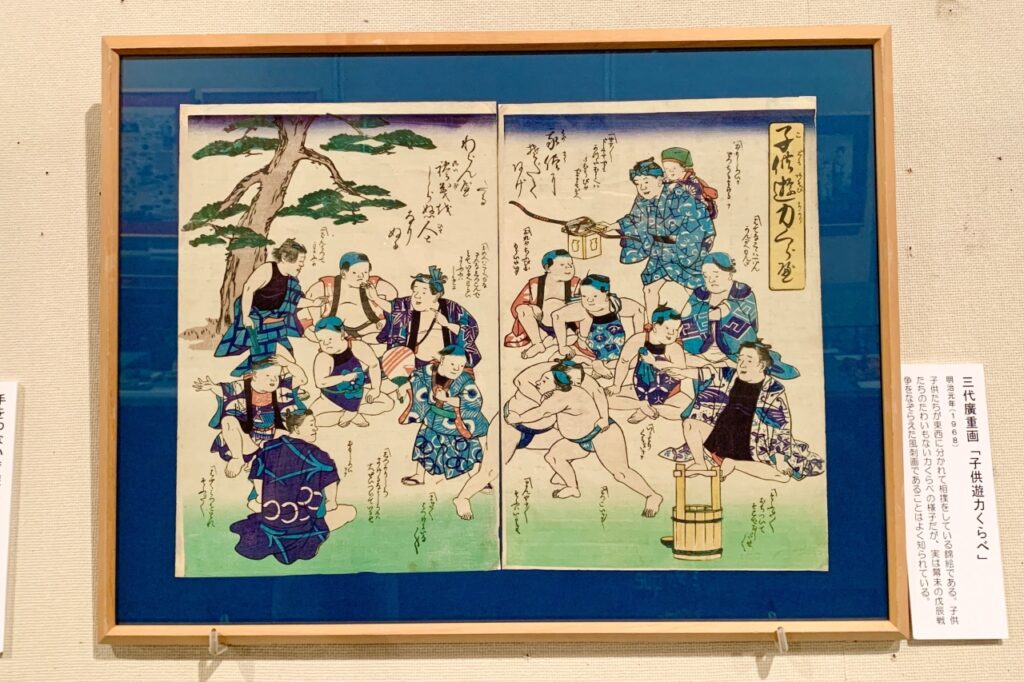
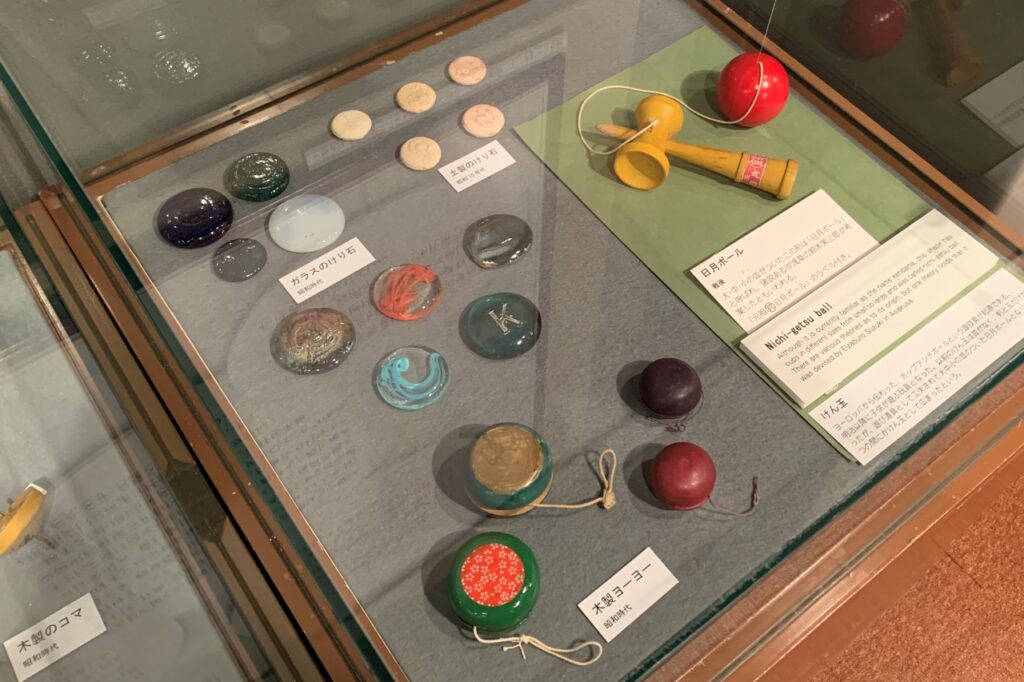


Mr. Honda’s recommendation is the miniature hand tools sold from the Meiji to Taisho eras. The point is that it is made from the same materials as the real thing, such as wood, bamboo, tinplate, and ceramics. Even adults were thrilled by its sophistication.


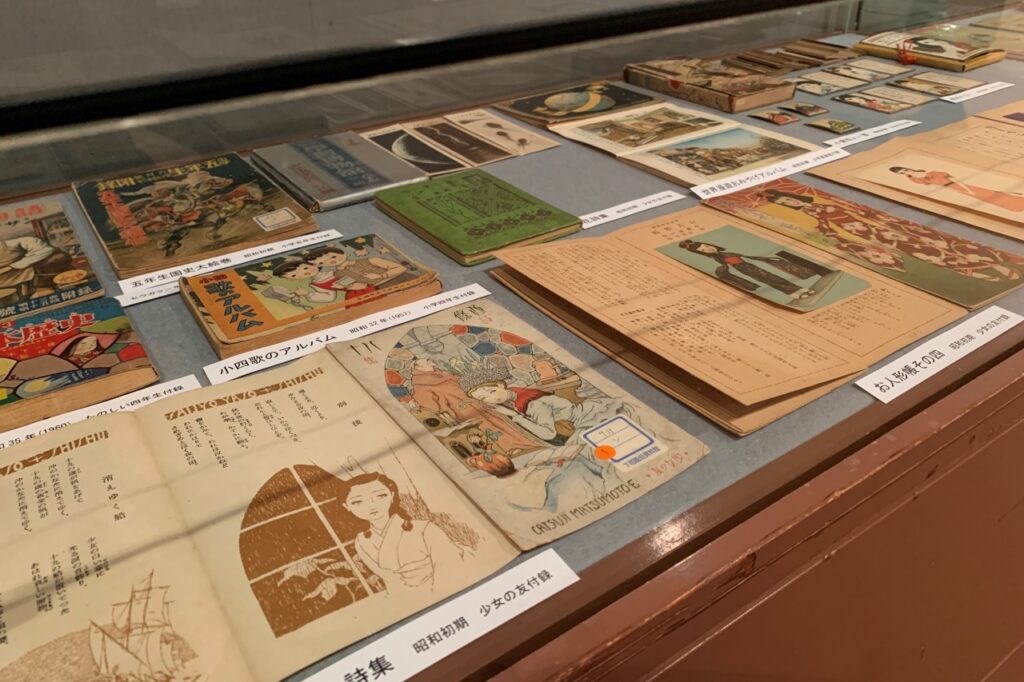
Among the displays of materials related to children’s growth ceremonies such as Shichi-go-san and Okuizome, Mr. Honda says he wants people to pay particular attention to the “Semoncho” .

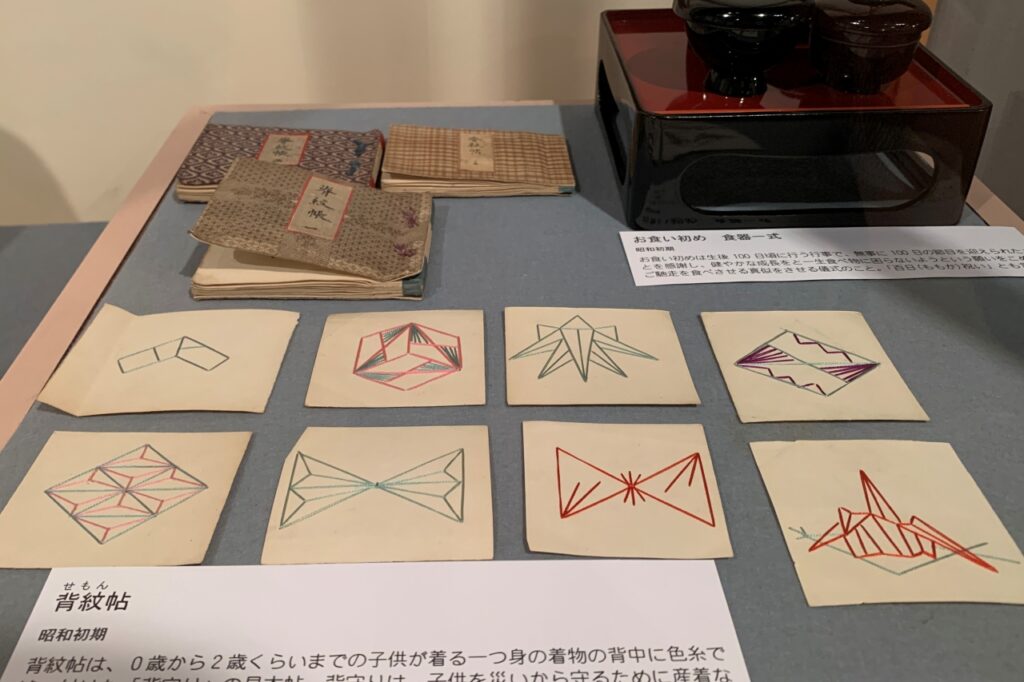
Semonjo is a sample book of “Semamori” which is sewn with colored thread on the back of one-piece maternity clothes worn by children from 0 to 2 years old.
A typical kimono has a seam in the center of the back, and it has been thought that the seam is regarded as an “eye” and has the effect of protecting the body from disasters coming from the back. However, since there is no seam on the back of the single-piece maternity clothes, it is said that the “eyes” called semamori were embroidered with colored threads to ward off evil. It is said that what is on display is a semamori from the Showa period, and that each design on the semamori has a meaning.
Mr. Honda says, “I would be happy if the exhibition of ceremonies related to the growth of children conveyed the hearts and minds of parents who have tried to protect their children in various ways.”

In addition, as a plan to be held at the same time as the special exhibition, in order to look back on the 42-year history of the museum, posters and flyers of the planned exhibitions and special exhibitions that have been held so far, as well as museum goods that are not available now. .
What will happen to the Shitamachi Museum after the renewal?
We asked Mr. Honda about the renovated Shitamachi Museum.
“We are still working out the details, but instead of repairing or refurbishing the current exhibition, we plan to completely change the impression for a new era. It’s planned (currently the exhibition is up to the 2nd floor), so I wonder if I can show you a completely different view. Please don’t worry about that.” (Mr. Honda)
Around Ueno Station, where the Shitamachi Museum is located, there are many facilities where you can appreciate modern and contemporary works of art with high academic value. Among them, the existence of the museum, which has honestly continued for 42 years with exhibits that allow you to feel the signs of people who used to live in the downtown area, is a special place not only for local residents but also for people living in the present age. I feel like I’m taking my place.
The Shitamachi Museum, which not only conveys shitamachi culture to future generations, but also serves as a bridge between generations who have experienced the culture in real life and generations who do not know it, will begin preparations for a new life on April 1, 2023. from day. Whether you have ever been to the museum or not, please visit it once before the renovation work to keep it in your memory.
Shitamachi Museum Overview
| location | 2-1 Ueno Park, Taito City 5 minute walk from JR Ueno Station Shinobazu Exit |
| Opening hours | 9:30 a.m. to 4:30 p.m. (Admission until 4:00 p.m.) |
| closing day | Mondays (or the following weekday if it falls on a public holiday), December 29th to January 3rd, special arrangement periods, etc. |
| Admission fee | General 300 yen (200 yen), Elementary, junior high and high school students 100 yen (50 yen)
*Prices in parentheses are for groups of 20 or more. |
| telephone number | 03-3823-7451 |
| Official site | https://www.taitocity.net/zaidan/shitamachi/ |
*The content of the article is as of the date of the interview (February 3, 2023). Please check the official website for the latest information.


